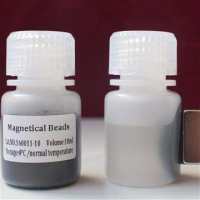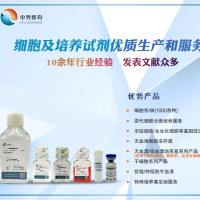siRNA (RNA Oligo) Annealing Protocol
互联网
Reagents:
Annealing buffer (5X)
Formula 1:
50 mM Tris, pH 8.0
100 mM NaClFormula 2:
100 mM Potassium Acetate
30 mM HEPES at pH 7.4
2 mM Magnesium AcetateFormula 3:
100 mM Potassium Acetate
30 mM HEPES-KOH at pH 7.4
2 mM Magnesium AcetateNote: All formulas can be used without much difference. All annealing solutions are given as 5X and can be stored frozen at -20ºC and freeze-thawed many times.
Procedure
General Handling of RNA oligos
RNA oligos especially single-stranded are susceptible to degradation by RNase introduced during handling. Wear gloves and use RNase-free pipette tips.Resuspension of single-stranded or annealed RNA Oligos
siRNAs are shipped from vendors as dried RNA oligos. Upon receipt, briefly centrifuge the tubes to bring down the content to the bottom of the tube. For single-stranded RNA oligos, we re-suspend it at 100 µM (that is 20 µM per liter) with RNase-free sterile water (Do not use DEPC-treated water). For example, if the amount of RNA received is 50 nM, 500 µl water will be needed to make a stock solution of 100 µM. Gently pipet up and down a couple of times to mix well, aliquot into sterile tubes and Store at -20ºC if not used immediately. For annealed double-stranded RNA oligos, we usually re-suspend it at 20 µM, that is 20 µM per liter. Note: the concentration of 20 µM is for EACH of the ds-oligos. ¡¡Annealing of single-stranded siRNA
- Dissolve siRNA, as stated above, at a convenient concentration, e.g. 100 µM, in RNase free water and store at ¨C20¡ãC.
- Dilute each siRNA using sterile RNase free water to a final concentration of 50 µM.
- Combine 30 µl of each siRNA solution and 15 µl of annealing buffer. Final volume is 75 µl, final concentration of siRNA duplex is 20 µM (30 µl X 50 µM = 75 µl X 20 µM).
- Incubate the solution for 1 minute at 90¡ãC and cool slowly down afterwards to room temperature (over a period of about 45 min). This can be easily done in a large beak with water. Heat the water to 90¡ãC and then leave it at room temperature. Put the siRNA tube on the water and let it slowly cool down. Note: use a large beak otherwise the water may cool down too fast. Alternatively, heat the solution for 1 min at 90C, followed by incubation for 1 hr at 37C.
- Briefly spin the tube to bring down all droplets from the wall and lid of the tube.
- Aliquot the annealed siRNA into RNase-free tubes and store at¨C20¡ãC. Do not freeze-thaw more than 5 times.
References
- Elbashir SM, Harborth J, Lendeckel W, Yalcin A, Weber K, Tuschl T. Duplexes of 21-nucleotide RNAs mediate RNA interference in cultured mammalian cells. Nature, 2001,411[6836]:494-8.
- Elbashir SM, Lendeckel W, Tuschl T. RNA interference is mediated by 21- and 22-nucleotide RNAs. Genes Dev, 2001, 15[2]:188-200
- Tuschl T, Zamore PD, Lehmann R, Bartel DP, Sharp PA. Targeted mRNA degradation by double-stranded RNA in vitro. Genes Dev, 1999, 13[24]:3191-7.
- http://www.rockefeller.edu/labheads/tuschl/sirna.html









